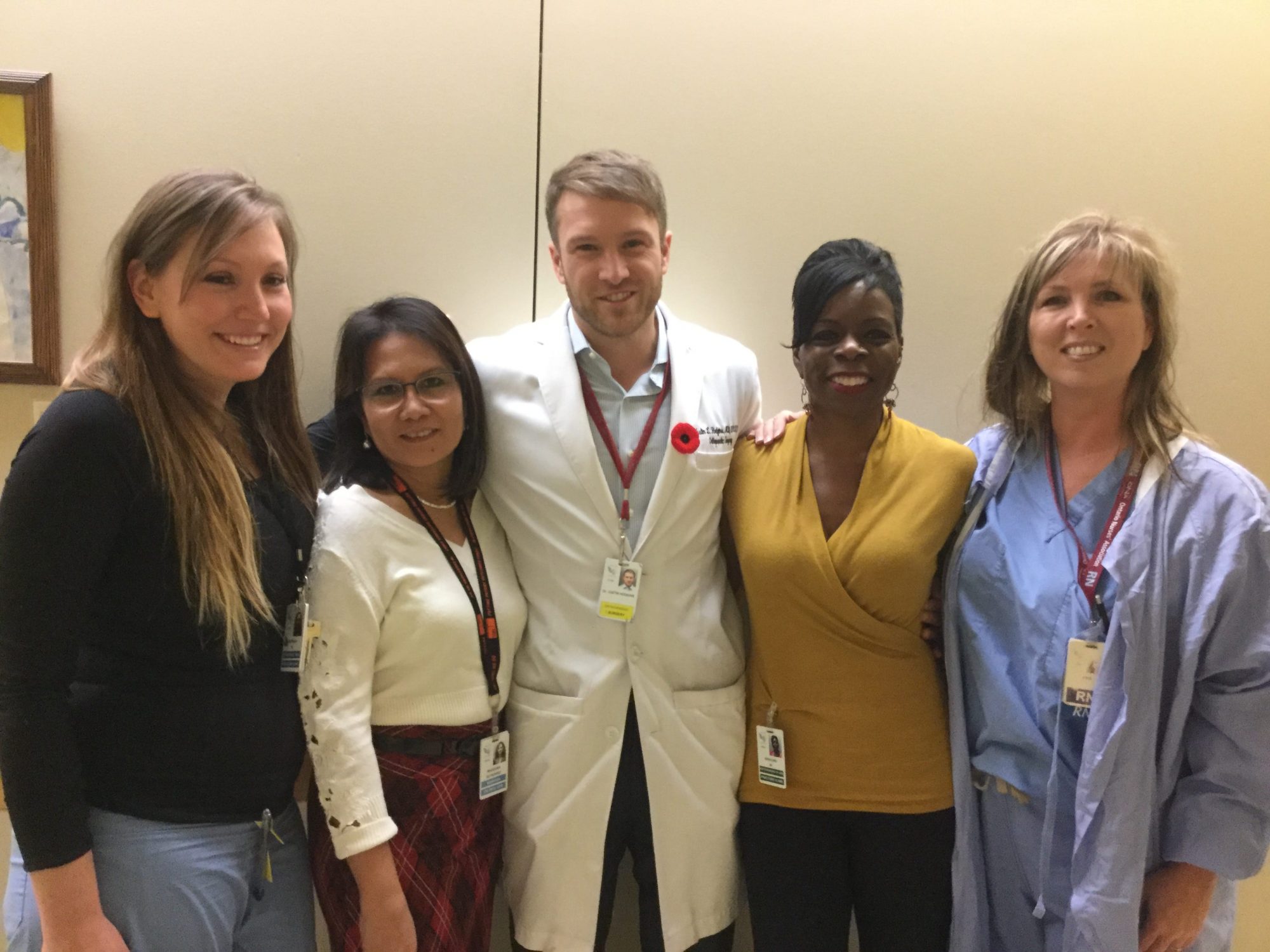Photo above: Members of the Fracture Clinic team at Scarborough and Rouge Hospital – Centenary site. From left: Cast technician Morgan Wood, Fracture Clinic Manager Rhodora Gutierrez, Orthopaedic Surgeon Dr. Justin Hodgins, Fracture Prevention Coordinator Winsome Way and Unit Coordinator Pam Hayden.
Every year, thousands of Canadians break a bone. In Scarborough we’re committed to helping our patients recover from broken bones – or fractures – but importantly, we’re also helping them avoid more fractures.
With the recent launch of the Fracture Screening and Prevention Program, in partnership with the Ontario Osteoporosis Strategy (OOS), at our Centenary site, all three of our Fracture Clinics are helping our patients with osteoporosis reduce their risk of having another fracture.
The Fracture Screening and Prevention Program (or FSPP) is program designed to improve care for people who have had a fragility fracture and help prevent future fractures.
At the SRH Centenary Fracture Clinic, Winsome Way, a Fracture Prevention Coordinator, speaks with patients about their personal risk factors for osteoporosis and their broken bone. She also highlights the need for appropriate bone mineral density testing which can assist in determining patients’ future fracture risk.
“People often do not make the connection between their fracture and their bone health,” explains Winsome. “Without a bone health assessment and appropriate treatment, the patient may be at risk for a future, potentially debilitating, fracture.”
Many people sustain fractures because their osteoporosis goes undiagnosed and untreated. Osteoporosis is a condition that causes bones to become thin and porous, decreasing bone strength and leading to an increased risk of breaking a bone. It is known as “the silent thief” because bone loss occurs without symptoms.
Fracture Prevention Coordinators, like Winsome, screen fragility fracture patients while working with orthopaedic surgeons, allied health professionals, diagnostic imaging, fracture clinic staff and primary care providers to help improve patient access to integrated and appropriate post-fracture care such as Bone Mineral Density testing and/or follow up with an osteoporosis specialist.
“I am thrilled to work with the orthopaedic team at Scarborough and Rouge Hospital, including our Orthopaedic Champion, Dr. Justin Hodgins. We are looking forward to building the connections with hospital staff, primary and community care and our long-term care partners to create a truly integrated program in this area and improve the quality of care for our patients,” says Winsome.
Developed through the OOS, the FSPP is operated by Osteoporosis Canada in collaboration with the Ontario Orthopaedic Association, the Ontario College of Family Physicians, the Ministry of Health and Long-Term Care and participating hospital sites.The OOS was launched to reduce morbidity, mortality and costs from osteoporotic fractures using a patient-centred, inter-disciplinary approach that is integrated across health care sectors. The Strategy aims to reduce osteoporotic hip fractures in Ontario by 20% by 2020.
Twenty-eight Fracture Prevention Coordinators (FPC) working in 37 fracture clinics across Ontario identify and assess men and women aged 50 and over who have had fragility fractures (broken bones) from incidents that would not normally cause bones to break, such as falling out of bed or slipping on ice.
For more information about the Ontario Osteoporosis Strategy, visit www.osteostrategy.on.ca or Osteoporosis Canada at www.osteoporosis.ca
SRH thanks Osteoporosis Canada for support with this program and story.

